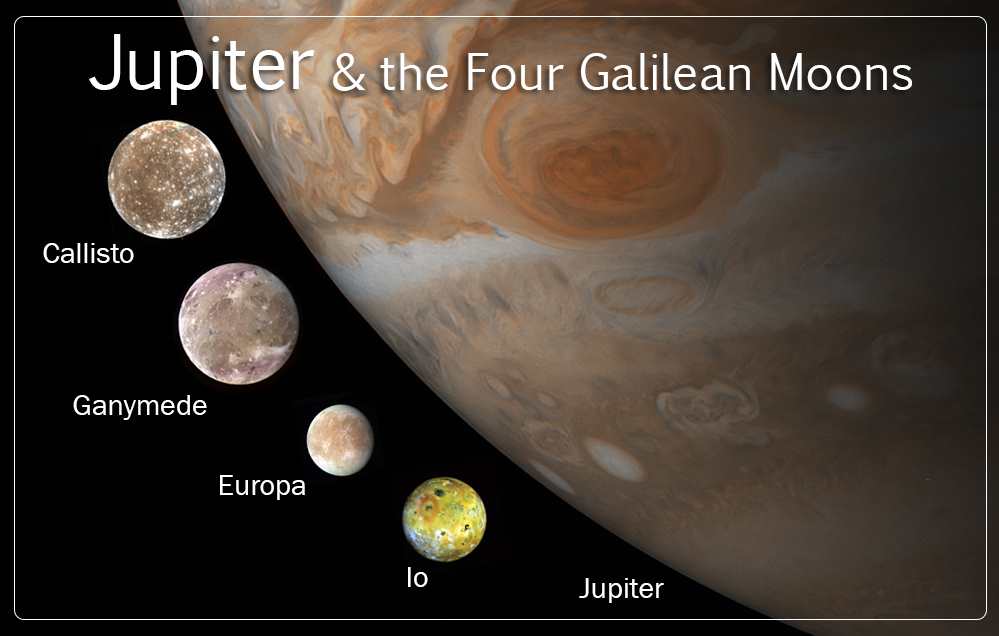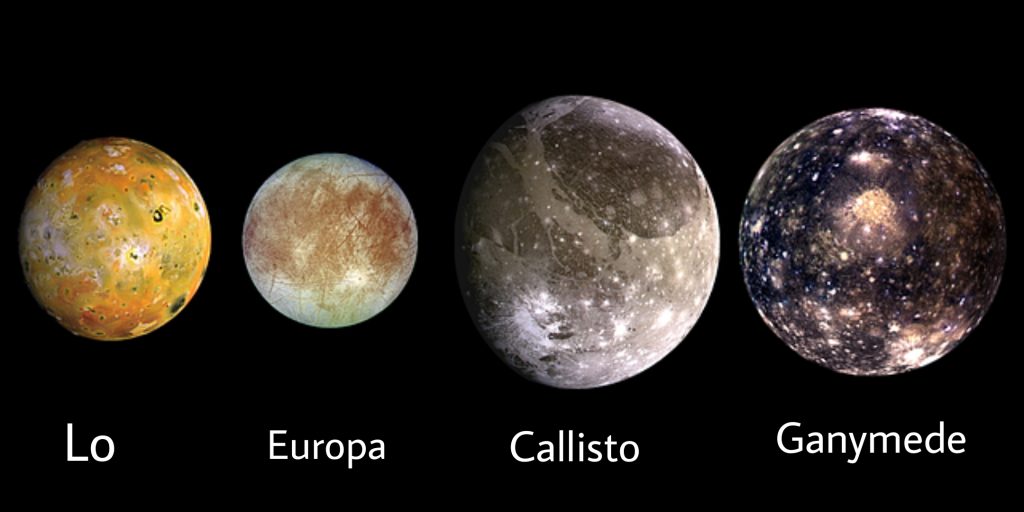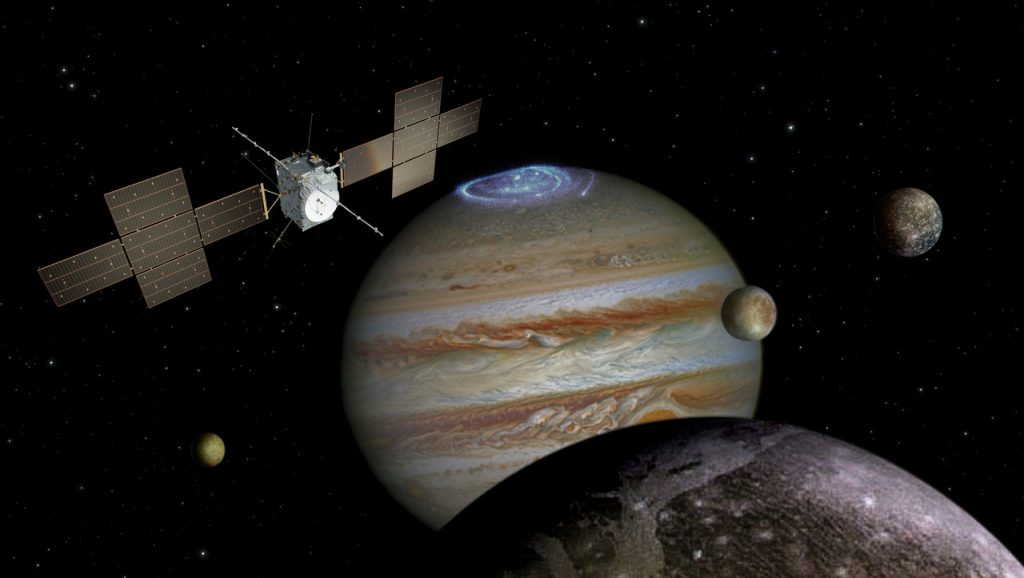Over the past decades, Jupiter has also been one of the favourite planets that astronomers and space scientists are looking to investigate.
The reasons for interest in Jupiter by astronomers and space scientists are many. Not only Jupiter will answer many questions related to the origin of the solar system and emergence of life, but the presence of water bodies on Jupiter’s three moons (‘Ganymede’, ‘Europa’ and ‘Callisto’) has also caught the eye of various space agencies and has built the enthusiasm in them to explore the Jupiter.
Being one of the largest planets in our solar system and mostly made up of Helium and Hydrogen, it is one of the brightest objects in the night sky after Moon and Venus.
‘Galileo Galilee’ first observed the planet and its moons 400 years ago using his high-powered homemade telescope. The moons discovered by him orbiting Jupiter are known as ‘Galilean moons’ (‘Io’, ‘Ganymede’, ‘Europa’ and ‘Callisto’).
Jupiter has 79 moons orbiting it. Till now, we have 53 named moons of Jupiter, and the rest 26 moons have not been named. The Jupiter moons ‘Ganymede’, ‘Europa’ and ‘Callisto’ have water oceans and are the main targets of study by astronomers and space scientists.
The European Space Agency (ESA) has planned to uncover various secrets of Jupiter and other questions related to the evolution of space by sending “JUICE” spacecraft.
In this article we will discuss the Juice–Mission to Unfold the Mysteries of Jupiter and Galilean Moons
What is Juice And Why is The Name Juice?
“Jupiter Icy Moon Explorer”, abbreviated as “Juice” is the spacecraft in the development phase to explore the Icy moons of Jupiter, and Jupiter itself. The “European Space Agency” has given the contract to “Airbus Defence and Space” company for its design. The spacecraft will be assembled at Toulouse, France.
Features/characteristics And Components Of Juice Spacecraft
The “Jupiter Icy Moons Explorer” is almost 6.2 tons in mass. It is in the final preparation phase and will be equipped with ten scientific components to set upon a journey to Jupiter, including Cameras, ice-penetrating RADAR, Magnetometer, pack of six sensors to study the magnetosphere of Jupiter, electrons, thermal plasma and energetic neutral atoms, UV imaging spectrograph, Altimeter e.t.c.
Related: Persistent Water Vapor in one Hemisphere of Jupiter’s moon Europa
What is the Juice Mission?
- Out of 79 moons orbiting Jupiter, ‘Ganymede’, ‘Europa’ and ‘Callisto’ are confirmed to have water vapour. The UV images of ‘Ganymede’ in 1998 by NASA’s Hubble space telescope confirms it. Thus, the concern of space scientists and astronomers to explore Jupiter and these three moons orbiting it has reached its zenith.
- The main aims of the JUICE mission are to explore the gas-giant Jupiter along with the three Galilean moons (namely ‘Ganymede’, ‘Europa’, and ‘Callisto’) while excluding the ‘Io’ moon of Jupiter. The exploration of the largest planet will unfold many answers to doubtful questions, like the origin of the solar system, formation of the Jupiter and the moons orbiting it.
- The spacecraft will set upon a 600-million-km long journey in August 2022. Before its final tour to Jupiter, the JUICE spacecraft will first go through the ‘Vaccum chamber test’ in the Netherlands. After the completion of the test, it will be taken to France and will be made to set off for the exploration tour to Jupiter.
- The spacecraft will reach Jupiter in July 2031 after six gravity assists from Earth. It will also be the first spacecraft to orbit the moon of another planet.
- ‘JUICE’ will spend approx. 9 months alone on Jupiter’s icy moon ‘Ganymede’ to explore and analyse its nature, and will take more than three years to study the other two Galilean moons to answer the question related to the planet formation and emergence of life.
- JUICE will also do the full Jovian moon system tour to learn more about its secrets, and the data gathered from JUNO (NASA’S JUPITER MISSION) will also be analysed.
- The year 2022 is the beginning of a new era in the research and investigation of space and various celestial bodies in space. Various missions and various spacecraft are beings sent by NASA, and other Government and Private space Organisations to contribute as much as they can.
- We are hoping to see a big change and huge advancement in space research in the upcoming years. Sill, the space is huge and we have very little time. There is a famous quote that says, “So much universe. And so little time.”
Resent posts:


